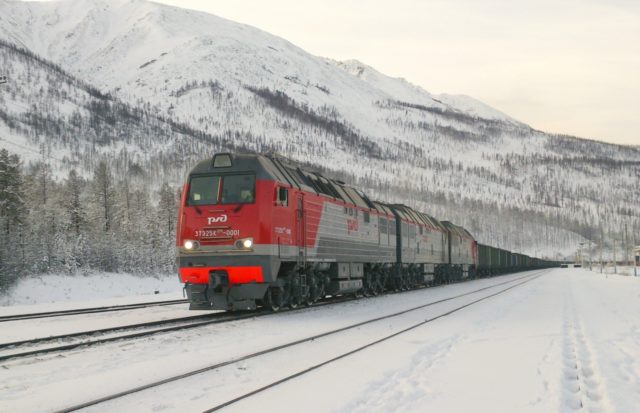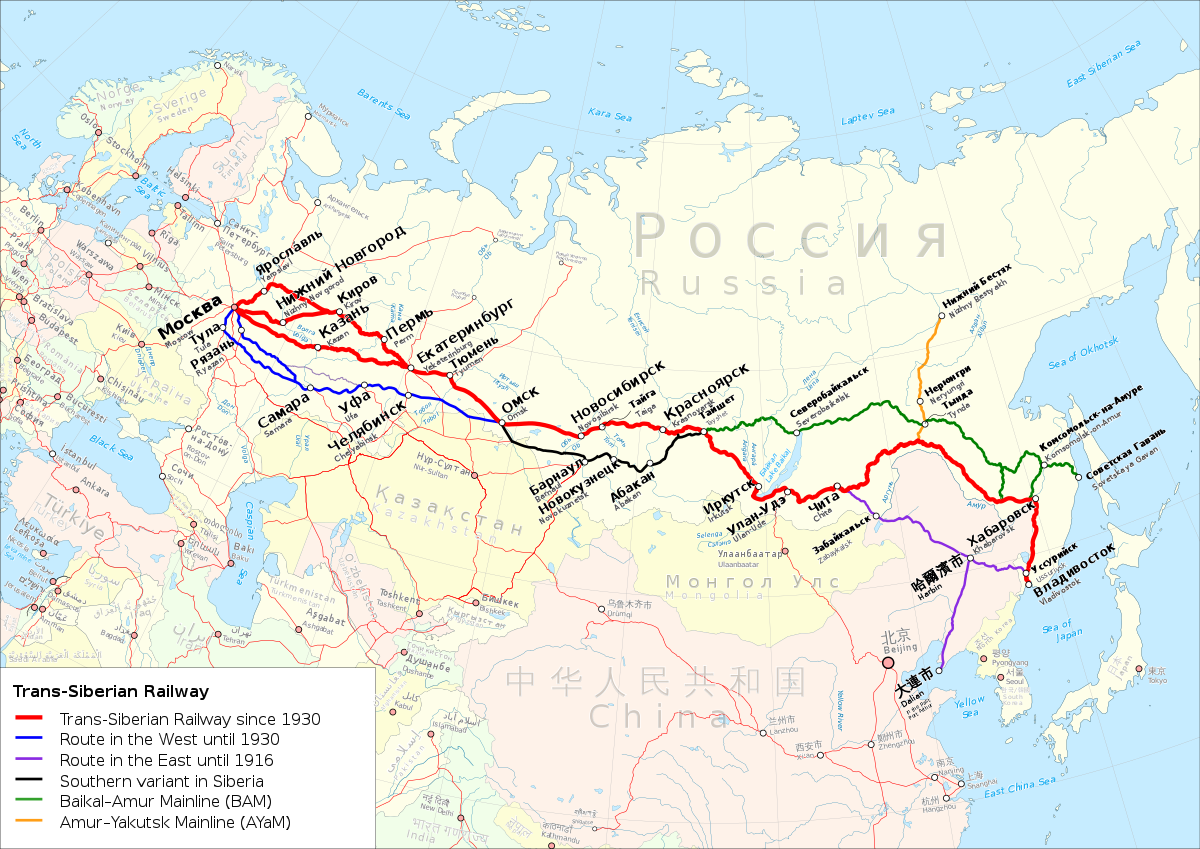
Moscow Struggles to Improve and Extend Siberian Railways to Preserve China Trade
Publication: Eurasia Daily Monitor Volume: 18 Issue: 57
By:

Moscow has long wanted to develop its railway network east of the Urals, both to promote the development of that largely road-less region and to expand the export of raw materials like coal. Those two factors continue to be important, but they have been joined in recent times by a third: fears that China will augment its reliance on railway routes through Central Asia that bypass Russia. Movement on these routes is, in many cases, cheaper and faster than on the Russian lines (see EDM, February 25, 2020). Moscow hopes to change that both for economic advantage and because its emerging “alliance” with China is ever more important in Russia’s own geopolitical calculations.
The Russian government’s problems in this regard have only increased over the last year. The pandemic shut down almost all work that had been started under a 2019 program to modernize the Baikal-Amur Mainline (BAM) and the Trans-Siberian railways. Meanwhile, China has used these months to promote the development of rail corridors through Central Asia (see EDM, April 23, 2020). As Russia has started to emerge from the pandemic, however, it has sought to restart this effort by focusing on the development and extension of BAM using military personnel who can readily be dispatched to this distant area and whose labor would cost Russian Railways nothing. The tasks are nonetheless daunting. More than half of BAM consists of only a single track, which slows the transit of trains and drives up costs—Russian railroads are not moving freight much faster today than they did a hundred years ago (Profile, March 11, 2015). Moreover, this rail line is not electrified and lacks modern signal systems (EastRussia, April 2). Finally, almost all of the route is located far from population centers, complicating efforts to find enough people who can work on railway construction or support its operation (Krizis Kopilka, March 6).
In a series of meetings over the last few weeks, President Vladimir Putin has turned his attention to this issue. He is clearly concerned that unless something is done fast, BAM will not allow Russia to continue to export coal to China or retain Beijing’s interest in relying on Russia as its primary rail transportation link with Europe. He has named Deputy Prime Minister Marat Khusnullin to supervise this effort and has given the go-ahead to plans discussed before the pandemic to use ten units of the Russian military’s Railway Troops. The uniformed personnel will not only upgrade existing portions of BAM but also extend that railway 340 kilometers to bring its last station closer to the Chinese border. This will facilitate the sale of Russian coal as well as expand possibilities for Chinese trade with Europe, all while improving opportunities for military cooperation between the two neighboring countries (Mil.ru, Sovershenno Sekretno, Interfax, April 5; Novie Izvestia, April 7).

Moscow is committing more than $20 billion to this project over the next three years, although the ultimate costs are likely to be much higher; but some observers argue these actions may prove too little too late. In the words of URA news agency commentator Sergey Dianov, “Russia risks losing the status of China’s main partner for the delivery of goods from Asia to Europe and fall out of this global economic chain.” That has long been a possibility, he continues, because “as a result of the low quality of Russian railroads and controversies with Asian shippers, the Chinese People’s Republic has already found alternative routes.” The URA journalist cites the conclusions of Andrey Karneyev, an Asia scholar at Moscow’s Higher School of Economics, who pointed out that “over the last several decades, China has surpassed Russia as far as infrastructure is concerned.” Catching up now will be both difficult and expensive (URA, April 7).
Earlier this week (April 6), President Putin summoned Oleg Belozerov, the head of Russian Railways, for a discussion on how Moscow can go about overcoming these difficulties (Kremlin.ru, April 6). The fact that Putin held such a meeting and recommitted himself to supplying soldiers to do most of the work has led some Moscow-based outlets to suggest that the past problems BAM has faced are finally about to be overcome and that Russian-Chinese rail traffic will now grow, overshadowing Beijing’s past efforts to find alternative routes. But even these outlets are suspicious about one assumption on which the Kremlin’s commitment is based: the sale of coal. While China remains a major market for Russian coal at least for the present, South Korea and Japan are already cutting back their use of this fossil fuel; and many living along the railway routes in Siberia and the Far East want Russia to do the same because of the impact of the associated pollution on their lives (Nezavisimaya Gazeta, April 5).
The Kremlin’s focus on BAM is not surprising. Although built to its current dimensions in the 1970s to provide Moscow with an overland route to the Far East away from the Chinese border, it has never really carried the kinds of volumes of domestic or foreign freight that Soviet and, later, Russian leaders had expected. Today, the Trans-Siberian Railroad carries about 140 million tons of cargo annually, close to its maximum capacity unless it is modernized; while BAM carries only 13 million tons. But to expand the latter will require even more investment and time: not only must a second track be laid and branches extending it toward China be built, but in many places new tunnels have to be carved out if there are to be two tracks rather than only one. Just how daunting a task that may be is suggested by the fact that Moscow has now identified 212 “priority” places for development. Even with Putin’s backing and the use of military personnel, it is highly unlikely Moscow will complete all these upgrades over the next three years, as Putin promises.
Consequently, despite the hype about BAM, China will increasingly look to other countries for its important container rail traffic to Europe. And that, in turn, will make it more difficult for Moscow to expand both its trade and security arrangements with Beijing.



